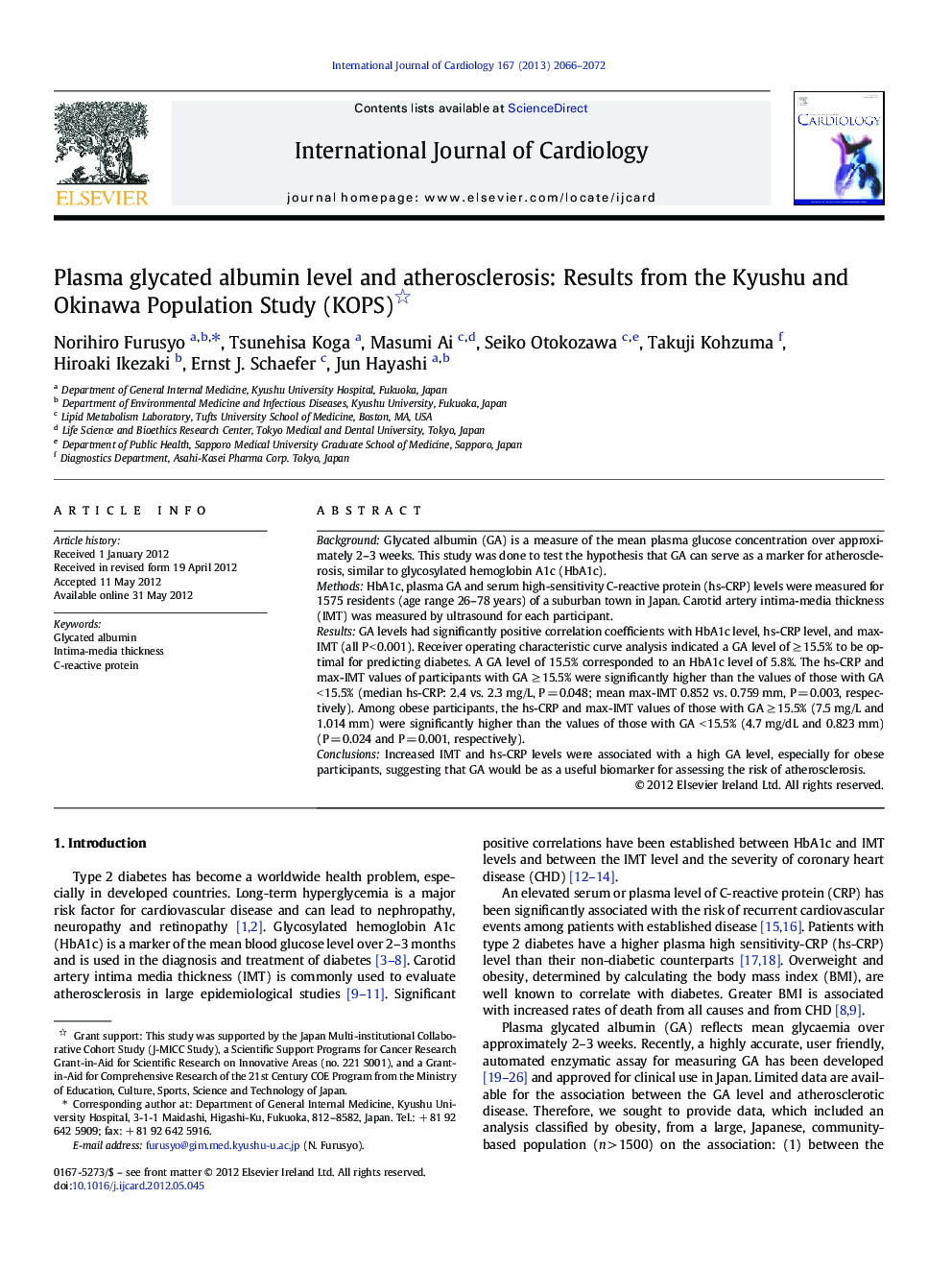| Article ID | Journal | Published Year | Pages | File Type |
|---|---|---|---|---|
| 5977236 | International Journal of Cardiology | 2013 | 7 Pages |
BackgroundGlycated albumin (GA) is a measure of the mean plasma glucose concentration over approximately 2-3 weeks. This study was done to test the hypothesis that GA can serve as a marker for atherosclerosis, similar to glycosylated hemoglobin A1c (HbA1c).MethodsHbA1c, plasma GA and serum high-sensitivity C-reactive protein (hs-CRP) levels were measured for 1575 residents (age range 26-78 years) of a suburban town in Japan. Carotid artery intima-media thickness (IMT) was measured by ultrasound for each participant.ResultsGA levels had significantly positive correlation coefficients with HbA1c level, hs-CRP level, and max-IMT (all P < 0.001). Receiver operating characteristic curve analysis indicated a GA level of â¥Â 15.5% to be optimal for predicting diabetes. A GA level of 15.5% corresponded to an HbA1c level of 5.8%. The hs-CRP and max-IMT values of participants with GA â¥Â 15.5% were significantly higher than the values of those with GA < 15.5% (median hs-CRP: 2.4 vs. 2.3 mg/L, P = 0.048; mean max-IMT 0.852 vs. 0.759 mm, P = 0.003, respectively). Among obese participants, the hs-CRP and max-IMT values of those with GA â¥Â 15.5% (7.5 mg/L and 1.014 mm) were significantly higher than the values of those with GA < 15.5% (4.7 mg/dL and 0.823 mm) (P = 0.024 and P = 0.001, respectively).ConclusionsIncreased IMT and hs-CRP levels were associated with a high GA level, especially for obese participants, suggesting that GA would be as a useful biomarker for assessing the risk of atherosclerosis.
